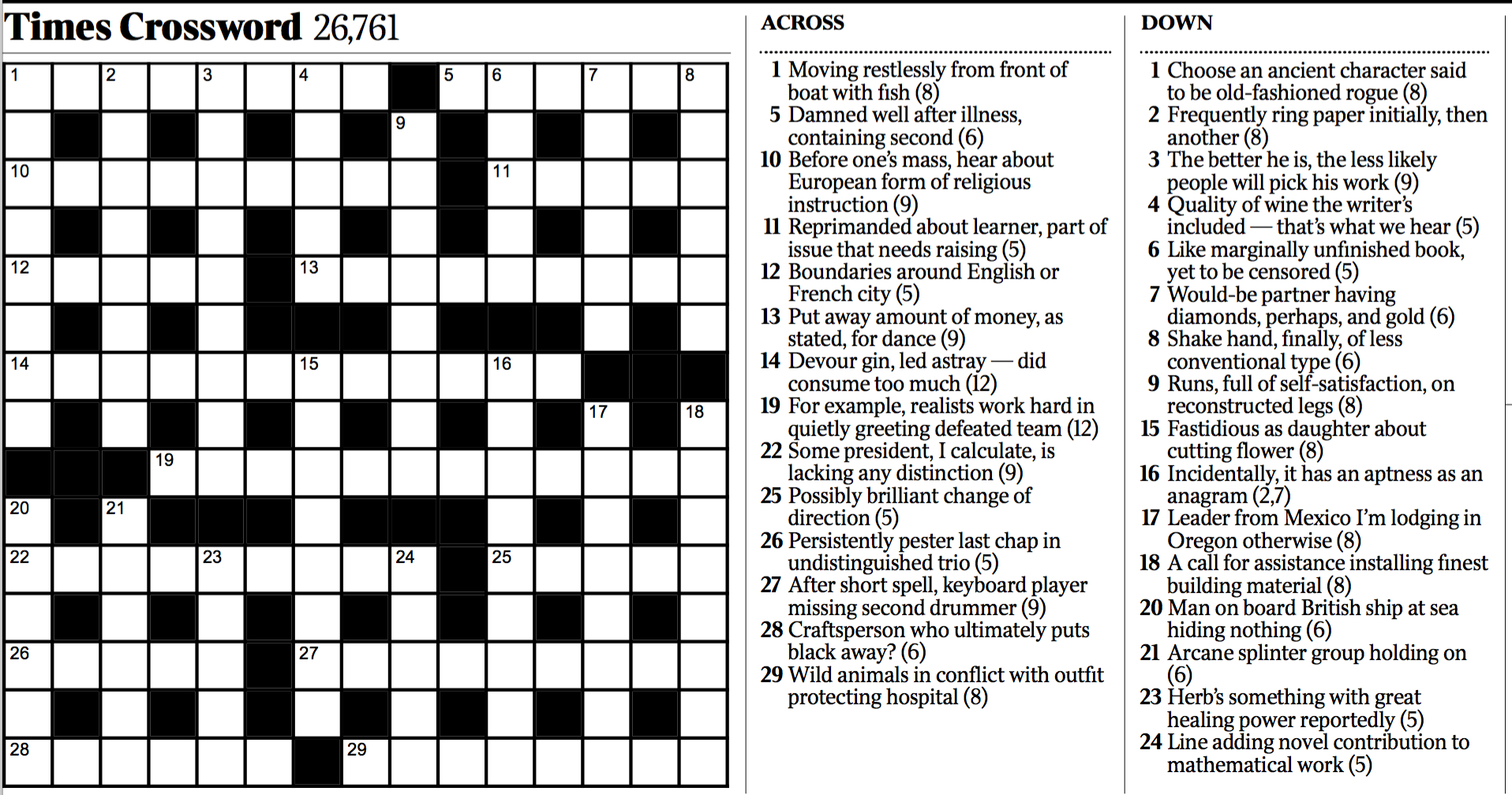

As a mode of reading, the puzzle symbolically signals a fact-finding mission, conjuring a reader in pith helmet and blinders who enters the poem attempting to excavate archaeological elements, rather than experience an emotional landscape.īut poetry and the crossword are yoked. As an art form, the crossword is painted as clever for the sake of cleverness, lacking the sensitivity of Eliot’s verse. Louis to the Waste Land, biographer Robert Crawford assures the reader that “the verse is nowhere here treated merely as a crossword puzzle or source-hunter’s labyrinth.” (Eliot is a typical punching bag helpfully for the cruciverbal naysayers, Eliot also had a crossword habit, completing them every day on the omnibus.) Today, many poets are reclaiming the crossword in the work itself.Ĭrawford’s description gives a double jab to the crossword. In the introduction to his 2015 Young Eliot: From St. According to Untermeyer, The Waste Land’s pleasures were “the same sort of gratification attained through having solved a puzzle, a form of self-congratulation.” A crosswordy poem, in other words, is merely a game, meant to be solved and not felt.Īnd not only is “crossword” a dirty word when it comes to writing literature, the idea of reading like a crossword is even more gauche. Eliot and James Joyce as “crossword-puzzle-school” writers, relying on pure formal pyrotechnics rather than emotion. Constructor Frances Hansen composed an original quatrain for the centerpiece of a 2002 Christmas-themed puzzle:ĭuring the 1920s, critics like Louis Untermeyer damned T.S. Some constructors have even used the crossword as an opportunity to test-drive original doggerel. But the real star of Gordon’s Dickinson puzzle isn’t in the grid itself––Gordon clued every answer in double dactyls: “Oompah-pah instrument” “Speak indecisively” “Footwear with lozenges” etc. (The clues: “Start of a question is…” / “More of the question is…” / “End of the question is…” / “Here’s what the answer is…”). “The Homer that Never Happened,” a 2014 crossword by the late, great constructor Merl Reagle, features a grid shaped like a baseball diamond when solvers complete the puzzle and “run” the bases clockwise from home plate back to home plate, the squares spell out the last lines of Ernest Lawrence Thayer’s 1888 classic “Casey at the Bat”: THERE IS NO JOY IN MUDVILLE MIGHTY CASEY HAS STRUCK OUT.Ī 2017 crossword by Peter Gordon features the following theme answers: WHAT FAMOUS POET / HAS A NAME THAT’S / A DOUBLE DACTYL / EMILY DICKINSON. Constructor Jacob Stulberg embedded a whole William Carlos Williams poem through one puzzle. Poems have a delightful history as crosswords. There was something very vivid about doing them.” While cleaning her father’s house, she found a collection of diacrostics, a particularly fiendish variety in which you have to fill in a quotation at the center and the name of the author and book title around the side. “I associate them with grief,” she told me. Notley started doing crosswords when her father died.

“If I want to relax, I have to be working with words. “I have a completely overactive mind,” she told me. It was snowing in Brooklyn (on my end) and in Paris (hers) I pictured Notley looking out from a balcon as city lights began to twinkle. “I think I don’t care about whether I do the puzzles or not,” Notley declared when I spoke to her, but the more we kept talking about them, the less I believed her. So begins Ted Berrigan’s poem, “Small Role Felicity.” “Alice” is the poet Alice Notley Anselm and Edmund are their sons. Some crossword puzzles are quite difficult and completing them is an achievement you can be proud of! If you become a crossword master, you can even start working on The NYTimes Crossword Puzzle, which is fiendishly difficult.Chatting Alice is doing the Times Crossword Puzzle. Once you have correctly completed all of the answers, you have "beaten" the puzzle. The answers will interlock with one another, so correctly answering one question will give you one or more letters that makeup part of a different answer. The answers that go into the white boxes are written across and down, with separate clues for each direction. The shaded squares are used to separate the answers. Most crosswords include numbers in the white squares so the player can match each question with a specific answer location.
#ABOUT CROSSWORDS SERIES#
The goal of a crossword puzzle is to fill the white boxes with the answers to a series of questions. The puzzle is filled with black and white squares. Crossword puzzles are drawn puzzles that are usually in the shape of a square or rectangle.


 0 kommentar(er)
0 kommentar(er)
